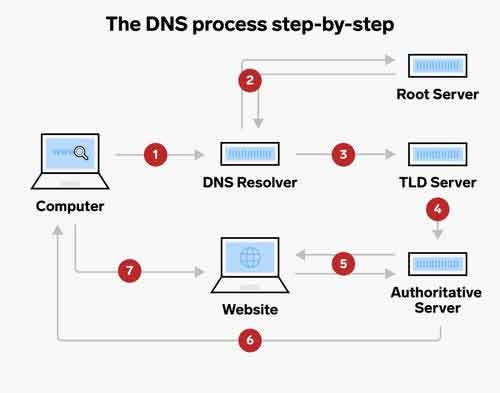
What is a DNS server? How Do Domain Name System Servers Connect You to the Internet? A DNS server helps your web browser connect to websites. A DNS server, short for Domain Name System server, converts web addresses into IP addresses. Without a DNS server, you won't be able to connect to any website. If you have problems with your default DNS server, you can change it.
What is a DNS server?
A Domain Name System (DNS) server is a key part of the Internet's backbone - without it, it would be impossible to use a web browser to find websites. You can think of the DNS server as a phone book. When you ask your computer to load a website, the DNS server matches the website name with the IP address. This allows your computer to find and load it correctly.
- Google DNS complete guide
How does a DNS server work?
When you write a URL, what you are really doing is asking your computer to find and connect to another IP address. To do this, it uses a series of related servers, which all form the DNS server. Here's how it works.
The DNS process, step by step
- Ask your web browser to load a website. Since the computers do not speak English, your browser cannot read a name like “www.holygamerz.com” and needs an IP address instead. For this reason, please send your request to a recursive DNS resolver. The goal of the recursive DNS resolver is to find the IP address connected to the website you entered.
- The first step of the resolver is to find the “Top Level Domain” or “TLD” of the website, in other words, whether it is a .com, .net, .org or some other type of site. It does so by asking to the root name server, which keeps a list of all websites in each TLD.
- Once the resolver knows the TLD, it goes to the server dei nomi TLD correspondent (for example, the .com name server) and asks him to find the correct IP address.
- The TLD name server finds the IP address and passes it to the authoritative name servers, which will find out if that address is correct.
- The authoritative name server sends a message to the address and waits for a response - if it gets the correct response, it has the correct IP address for the desired website.
- If the IP address is correct, the authoritative name server sends it back to the web browser.
- Once the web browser receives the correct IP address, the web page starts loading.
This all happens in seconds: if your internet connection is very fast or if you've recently visited the site (see below for more information), it can happen in milliseconds.
Caching can avoid calling the DNS server
If you are visiting a new website, your browser will go through the entire process described above. But if it did this for every single website, things could slow down - that's why recently visited websites are cached in the web browser.
When you try to load a website, the DNS server will first check your cache file to see if the IP address is already saved there. If so, it will fetch the IP address directly from the cache, which saves time.
Each entry in the cache has a time limit associated with it, called time-to-live (TTL). The TTL for any IP address is typically around 48 hours, and once this has elapsed, the IP address will disappear from the cache. This means that the DNS server will have to go through the entire recursive lookup process again.
How will I change DNS
Read our article if you want to know: how to perform DNS change.
As a general rule, the web browser uses a standard public DNS server, usually configured and managed by the internet service provider. However, some advanced users manually change their DNS server. This can increase your internet speed and protect your privacy.
Changing the DNS can be done through the computer's “Network” menu in the Settings app. If you are looking for a new DNS, you can try the Google DNS server or any number of other custom DNS servers.
Further Reading:
- How to change your nickname in Discord
- Netflix crashes on a Windows computer [Solved]
- How to print from android phone
- What is Plex? All you need to know
- How to disable Siri on Mac and iOS






